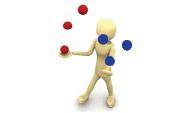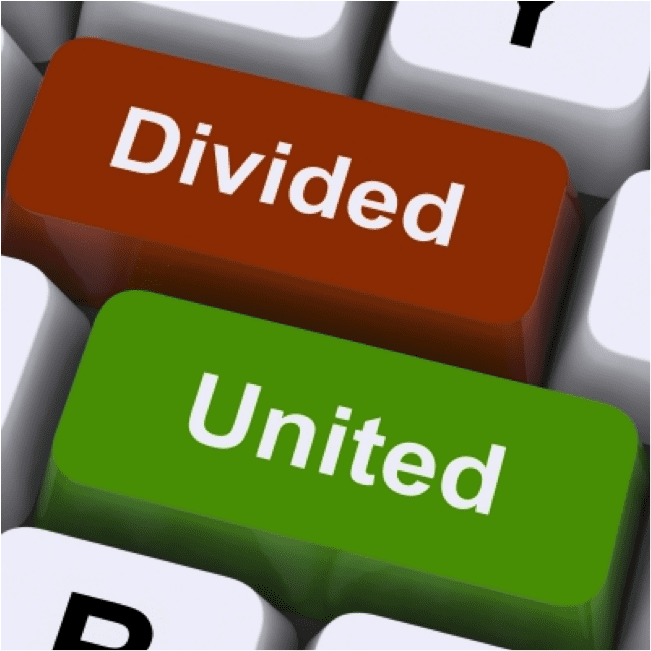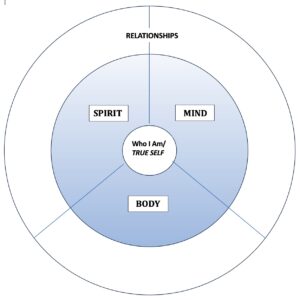Balance is merely the fusion of opposites. In the workplace, balance is the fusion between continuous improvement (incremental change) and disruptive innovation (radical transformation). When we remove two steps from a 10-step work process to increase efficiency (add value for our customers) and when we continue to find ways to remove more unnecessary steps, we are practicing continuous improvement. Typically, our past experiences, research and empirical data facilitate these improvements. When we shift from technology A (USB flash drives) to technology B (cloud computing) and create new value and a new market eventually displacing A, we are practicing radical transformation. Although, past experience and data will support stabilizing an innovation, it is human inventiveness and intuition that instigate radical transformation.
A classic example of technology disruption and displacement occurred with the invention of Wikipedia (a community-edited online encyclopedia). Neither Encyclopedia Britannica nor Microsoft’s Encarta could rival Wiki’s low/no price, unlimited size and instant updates. Thus, new value and a new market was created replacing both older forms of technology. Here are a few more radical transformations consumers enjoy:
FROM:
- Rail Transport
- Chemical photography
- Postal (snail) mail
- Mainframe computers
- Minicomputers
- Personal computers
- Wood, glass, metal
- Incandescent Light bulbs
- Business for profit
TO:
- Automobiles
- Digital photography
- Email
- Minicomputers
- Personal computers
- Smartphones & Tablets
- Plastic
- Light-emitting diodes (LEDs)
- Business for passion and purpose**
The ability to fuse incremental business improvements with radical transformation is both a personal and professional challenge for today’s leaders of change. Firstly, many individuals and organizations are not yet aware of this balancing act. Many business leaders are not seeing the challenge as one of integration and continue to segregate business improvement (sustaining and growing existing value and markets) from innovation (creating new value and new markets).

More simply illustrated, in their right hand they juggle several balls to improve their core businesses. In their left hand, they juggle several balls to create innovative value and markets. These seemingly opposite juggling acts, when not integrated, create a ‘schizophrenic stress’ due in no small part to the fact the human brain cannot hold two thoughts at the same time. Over the long term, the mental exercise of jumping back and forth between these two sets of activities increases work and stress loads. As we know, unattended stress expands until it explodes into dysfunction and disease whether at a personal, interpersonal, organizational or societal level.
In order to meaningfully and simultaneously balance continuous improvement and radical transformation, today’s change leaders must fuse these two thought models (diverse ways of doing and being) into a new thought paradigm and a new personal and organizational identity — a radical transformation. This new way of viewing and adapting to one’s environment comes first from an awareness of what is emerging in that environment.
Awareness, fed by our intuition, offers us greater possibilities than previously existed in our consciousness. This expansion of choice leads us down new and different pathways in our thought processes, which inevitably changes our attitude (thoughts and beliefs). A new attitude draws forth new experiences and through experimenting with new behaviours, we align our actions with our awareness and our attitude. In effect, radical transformation’s output is self-mastery first, an inside job followed by enacting the changes in our external environment.
Let’s test this out with a concrete example. Ask yourself, what is emerging** in our current digital, global environment? Consistently surveys “show that Generation Y (under 30’s) are increasingly placing social purpose, work-place culture, ethics and organizational mission as fundamentally important in their lives, as well as fair remuneration.” This new attitude emerged from an awareness of events similar to and including the profiteering, dangerous working conditions and devastating loss of 1100 lives in the Bangladesh garment factory collapse. With greater awareness of how inhumanely these workers were treated, global pressure from garment consumers around the world began the attitude shift for individuals and corporations (i.e., Joe Fresh) to change their behaviours — new health and safety regulations, the possibility of unionizing, responsibility for healthy workplace practices placed on the shoulders of employers outsourcing their manufacturing to other nations, etc.
The business world is currently learning that in order to radically transform business into a vehicle for awakening passion and realizing purpose and potential, we first must delight the customer, which includes external consumers and supply chains, internal employees and stakeholders. The adage echoed over the past 20 years — do what you love** and the money will follow — is now having its time in the light of awareness. Collectively, attitudes are changing to support this belief. Since belief precedes behaviour change, our actions are just beginning to align. For greater understanding on aligning awareness, attitude and action, read my DIY coaching book, From Now to WOW: An Invitation to Transformation.
In conclusion, if you see yourself as a leader of change, then you will or are facing a radical transformation into a new sense of yourself — a new identity. I would further suggest that all 7 billion inhabitants of this planet are leaders of change, and it is our collective time to shine our awareness on those aspects of self we need to master to co-create the life and world we wish to inhabit.
What seemingly opposing internal aspects have emerged into your awareness? What old belief about yourself is inhibiting you from moving forward? What new positive belief can you begin to practice to affirm your new attitude about who you are and what you value?
My soul is calling me to fuse my opposites.
Every day I take one action to bring me closer to wholeness.





